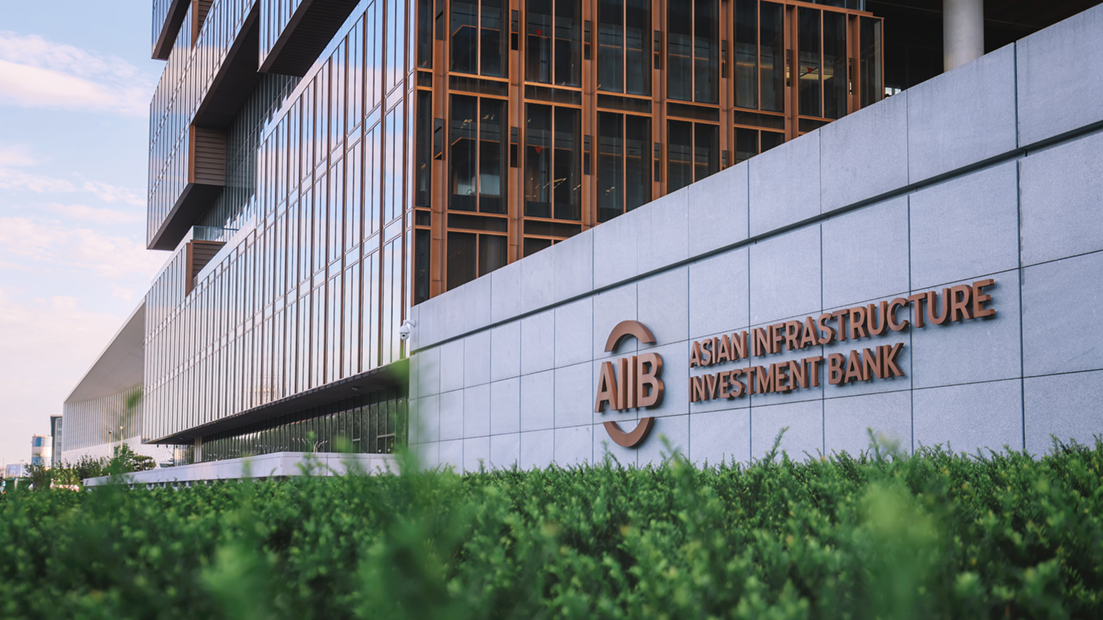The AIIB’s 10 biggest beneficiaries
The AIIB's 10 biggest beneficiaries fDi Intelligence


India Receives Largest Support from AIIB

India has been the biggest recipient of support provided by the Asian Infrastructure Investment Bank (AIIB), receiving more than a quarter of the bank’s total committed finance between 2016 and March 2023.
AIIB and Sustainable Development Goals
The AIIB was established in 2016 to fill a need for infrastructure investments in Asia. The bank began life with 57 founding members, of which 37 were within Asia and 20 outside. Since then, it has expanded its member base to 106, which represent 81% of the global population and 65% of global GDP, according to its own estimates. As of July 2023, it has financed projects in 34 countries.
Advertisement
AIIB’s Financial Support
- Between 2016 and March 2023, the bank financed 212 projects worth a total of around $40.4bn.
- India is the biggest beneficiary of AIIB support, with a total of $9.5bn-worth of committed finance.
- Trailing behind India each with more than $3bn of committed investments are Turkey, China, Bangladesh, and Indonesia.
India’s Investments
India’s investments from AIIB have spanned energy, transport, and public health. Since 2017, it has recorded more annual approved finance than any other member country.
Turkey’s Investments
Turkey ranks as the second biggest recipient of AIIB support with $3.9bn-worth of infrastructure commitments. The bank’s interests in Turkey have included traditional energy, renewable energy, public health, transport, and post-Covid 19 economic recovery.
China’s Investments
China comes in third place with $3.5bn-worth of finance commitments in infrastructure projects. The AIIB’s investments have ranged from energy to digital infrastructure.
Bangladesh’s Investments
Committed investments in Bangladesh total $3.2bn. The bank approved financing to improve cross-border connectivity between Bangladesh and India and provided budget support to mitigate the adverse social and economic impact of the pandemic.
Indonesia’s Investments
Indonesia has received projects worth a total of $3.1bn from AIIB. The bank approved funding to support economic resilience in Indonesia and to develop a large-scale pumped storage hydropower facility.
More data trends you might have missed:
Other Investments and Support
The AIIB has also made investments in the category of “multicountry” and has approved projects in Africa and Latin America. Egypt is the only non-Asian country to appear in the top 10 beneficiaries, with a $360m project approved to support sustainable growth.
Conclusion
The AIIB’s support and investments align with the Sustainable Development Goals (SDGs) by focusing on infrastructure development, renewable energy, public health, and economic recovery. As of March 2023, the top 10 beneficiaries of AIIB support include India, Turkey, China, Bangladesh, Indonesia, multicountry projects, Pakistan, Uzbekistan, the Philippines, and Egypt.
SDGs, Targets, and Indicators Analysis
1. Which SDGs are addressed or connected to the issues highlighted in the article?
- SDG 9: Industry, Innovation, and Infrastructure
- SDG 11: Sustainable Cities and Communities
- SDG 13: Climate Action
- SDG 17: Partnerships for the Goals
The article discusses the Asian Infrastructure Investment Bank (AIIB) and its support for infrastructure projects in various countries. This aligns with SDG 9, which focuses on building resilient infrastructure, promoting inclusive and sustainable industrialization, and fostering innovation. The AIIB’s investments in energy, transport, and public health also contribute to SDG 11, which aims to make cities and human settlements inclusive, safe, resilient, and sustainable. Additionally, the AIIB’s investments in renewable energy and its response to the COVID-19 pandemic contribute to SDG 13 on climate action. Lastly, the AIIB’s role as a multilateral development bank and its partnerships with member countries align with SDG 17 on partnerships for the goals.
2. What specific targets under those SDGs can be identified based on the article’s content?
- SDG 9.1: Develop quality, reliable, sustainable, and resilient infrastructure
- SDG 9.4: Upgrade infrastructure and retrofit industries for sustainability
- SDG 11.2: Provide access to safe, affordable, accessible, and sustainable transport systems
- SDG 11.3: Enhance inclusive and sustainable urbanization and capacity for participatory, integrated, and sustainable human settlement planning and management
- SDG 13.2: Integrate climate change measures into national policies, strategies, and planning
- SDG 17.6: Enhance North-South, South-South, and triangular regional and international cooperation on and access to science, technology, and innovation
The specific targets mentioned in the article include developing sustainable infrastructure (SDG 9.1), upgrading infrastructure for sustainability (SDG 9.4), providing access to sustainable transport systems (SDG 11.2), enhancing sustainable urbanization (SDG 11.3), integrating climate change measures into policies (SDG 13.2), and promoting international cooperation on science, technology, and innovation (SDG 17.6).
3. Are there any indicators mentioned or implied in the article that can be used to measure progress towards the identified targets?
- Amount of finance committed to infrastructure projects
- Number of projects financed
- Investments in energy, transport, and public health
- Approved finance for annual projects
- Investments in traditional energy, renewable energy, and post-COVID-19 economic recovery
- Investments in cross-border connectivity and budget support for pandemic mitigation
- Investments in economic resilience and large-scale pumped storage hydropower facility
- Investments in data centers and closed-end funds
- Approved projects in Africa and Latin America
- Investments in sustainable growth, private sector development, and women’s economic inclusion
The article mentions or implies several indicators that can be used to measure progress towards the identified targets. These indicators include the amount of finance committed to infrastructure projects, the number of projects financed, the specific sectors (energy, transport, public health) receiving investments, the annual approved finance for projects, the types of investments made (traditional energy, renewable energy, post-COVID-19 recovery), and the investments in cross-border connectivity and budget support for pandemic mitigation. Additionally, indicators such as investments in economic resilience, large-scale pumped storage hydropower facility, data centers, and closed-end funds can also be used. Finally, the article mentions investments in Africa and Latin America, as well as investments in sustainable growth, private sector development, and women’s economic inclusion as indicators of progress.
SDGs, Targets, and Indicators Table
| SDGs | Targets | Indicators |
|---|---|---|
| SDG 9: Industry, Innovation, and Infrastructure | 9.1 Develop quality, reliable, sustainable, and resilient infrastructure 9.4 Upgrade infrastructure and retrofit industries for sustainability |
– Amount of finance committed to infrastructure projects – Number of projects financed – Investments in energy, transport, and public health |
| SDG 11: Sustainable Cities and Communities | 11.2 Provide access to safe, affordable, accessible, and sustainable transport systems 11.3 Enhance inclusive and sustainable urbanization and capacity for participatory, integrated, and sustainable human settlement planning and management |
– Amount of finance committed to transport systems – Investments in sustainable urbanization |
| SDG 13: Climate Action | 13.2 Integrate climate change measures into national policies, strategies, and planning | – Investments in renewable energy – Investments in post-COVID-19 economic recovery |
| SDG 17: Partnerships for the Goals | 17.6 Enhance North-South, South-South, and triangular regional and international cooperation on and access to science, technology, and innovation | – Investments in data centers and closed-end funds – Approved projects in Africa and Latin America |
Behold! This splendid article springs forth from the wellspring of knowledge, shaped by a wondrous proprietary AI technology that delved into a vast ocean of data, illuminating the path towards the Sustainable Development Goals. Remember that all rights are reserved by SDG Investors LLC, empowering us to champion progress together.
Source: fdiintelligence.com

Join us, as fellow seekers of change, on a transformative journey at https://sdgtalks.ai/welcome, where you can become a member and actively contribute to shaping a brighter future.







